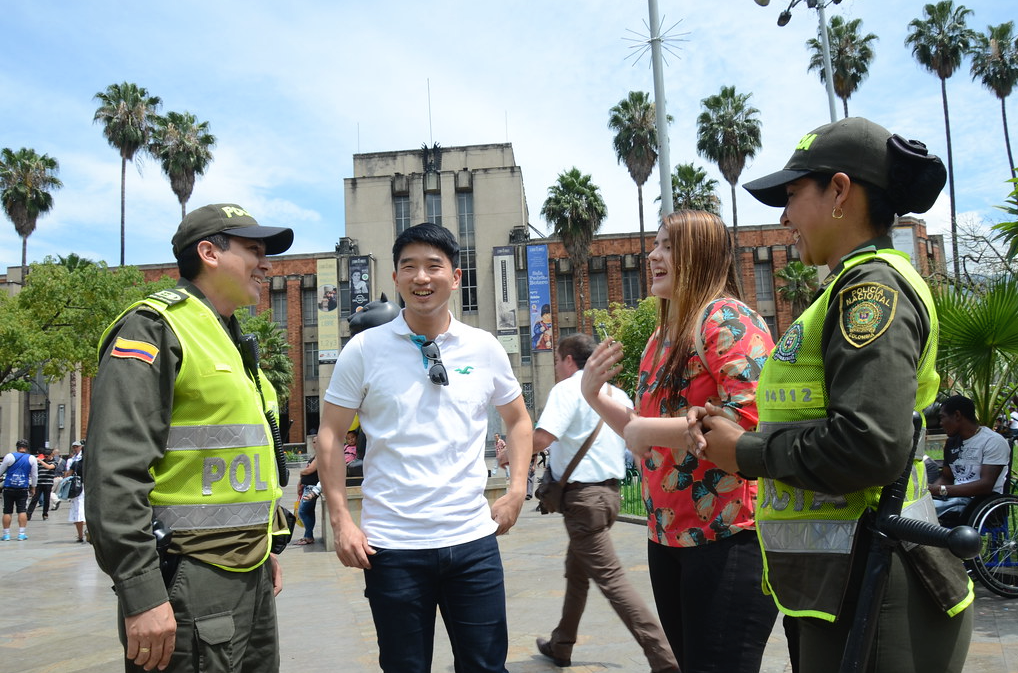During the First International Colloquium on Tourism Security, held recently in the Mexican capital, experts in the field agreed that strengthening security in tourist areas is a fundamental pillar for the international positioning of destinations such as Mexico. To this end, it is necessary to coordinate efforts between tourism service providers, the private sector, municipalities, states, and governments.
However, for Latin American countries, with high tourism potential but with complex security challenges, this objective presents significant challenges, as the measures often adopted, such as the militarization of tourist areas, end up having a counterproductive effect and driving tourists away.
Comprehensive tourism security, on the other hand, lies in adopting public management measures and designing policies and strategies that specifically understand and address the crimes that directly affect tourists, tour operators, and merchants.
The importance of tourism safety
Although the concept of tourism safety encompasses different approaches in its analysis, one of the premises is to ensure that tourists return home safely and in the best conditions to fully satisfy their desire to enjoy and travel for pleasure. To understand this concept comprehensively, it is necessary to break down both the tourism component and the security component associated with it and the phases in which they are developed in the territory.
On the one hand, UN Tourism (formerly UNWTO) understands tourism as a travel experience that seeks to offer tourists moments of enjoyment and pleasure. Concerning security, it points out that it implies guaranteeing an environment free of risks and threats that could negatively affect the traveler’s experience. The combination of these two aspects should result in a tourism security approach that is focused on the quality of service that tourists demand, and that destinations must offer.
This approach considers safety to be the essential element for guaranteeing positive and satisfactory experiences for tourists. From this perspective, tourism safety implies not only the absence of risks but also the creation of a welcoming and trustworthy environment that promotes quality and excellence in tourism services.
In other words, the aim is to protect “the life, health and physical, psychological and economic integrity of visitors, service providers and the local host population.” In other words, to provide optimal conditions that allow both tourists and service providers to exercise their rights and duties effectively.
In this sense, the strategic plan outlined by UN Tourism provides a comprehensive framework to address tourism security challenges, including aspects such as risk identification and prevention, protection of tourists against crime, and the establishment of security measures in tourism facilities.
It is an issue that implies a high level of responsibility. The UN Global Code of Ethics for Tourism states: “It is the task of the public authorities to provide protection for tourists and visitors and their belongings; they must pay particular attention to the safety of foreign tourists owing to the particular vulnerability they may have; they should facilitate the introduction of specific means of information, prevention, security, insurance, and assistance consistent with their needs; any attacks, assaults, kidnappings or threats against tourists or workers in the tourism industry, as well as the wilful destruction of tourism facilities or of elements of cultural or natural heritage should be severely condemned and punished in accordance with their respective national laws”.
Ensuring a safe environment, therefore, not only generates a perception of trust that positions the city as a safe and reliable tourist destination, but should also be assumed as a long-term strategy to promote local economic development and attract more travelers to the destination.
Understanding that tourism safety is a critical component for the consolidation and competitiveness of the tourism industry, countries such as Colombia and Mexico have developed their Strategic Plans, which, on paper, prioritize the coordination and implementation of practical measures seeking to ensure the sustainability of this economic activity.
At the International Colloquium on Tourism Security, tourism security specialist Manuel Flores Sonduk emphasized the need to bring together tourism service providers, municipalities, states, and the national sector to address the security challenges affecting both Mexican citizens and foreign visitors. He also highlighted the importance of adopting a joint model based on best practices implemented in other successful tourism destinations around the world. Such a collaborative approach would be critical to effectively address security issues and improve the perception of safety among tourists.
It is an issue that requires attention, knowing that the perception of risk is a determining factor in the selection of destinations by tourists, as well as in the planning and duration of their trips.
The complexity and cost associated with these activities require tactical and strategic decisions in destination security management, such as having relevant information on visitors’ impressions of destination security. Therefore, in addition to establishing an effective security system, it is essential to constantly monitor visitors’ perceptions of security and address any concerns or threats they may have.
By understanding and addressing these concerns, it is possible to mitigate the negative effects on tourist visits due to fears related to personal safety. Similarly, activities such as improving destination security standards and effectively managing the destination’s image and brand also contribute to this end.
As tourism has become a highly competitive activity, tourism security has become even more important, especially in Latin American countries. Although the growth of international tourist travel has led to the implementation of more rigorous security standards, there are still threats, many of them transnational, which tend to have long-term negative effects on the tourism industry.
Indeed, tourists no longer only seek destinations for their natural and cultural attractions but also prioritize their safety. Thus, tourist destinations must commit to implementing effective security measures that promote visitor confidence through comprehensive, collaborative, and attentive management.
This panorama, in turn, highlights the need to deepen research on tourism security, develop more effective strategies than militarization, and aim at comprehensive risk management and security in general, with actions that guarantee safe and satisfactory experiences for tourists and tourism service providers.
*Translated by Micaela Machado Rodrigues from the original in Spanish.












